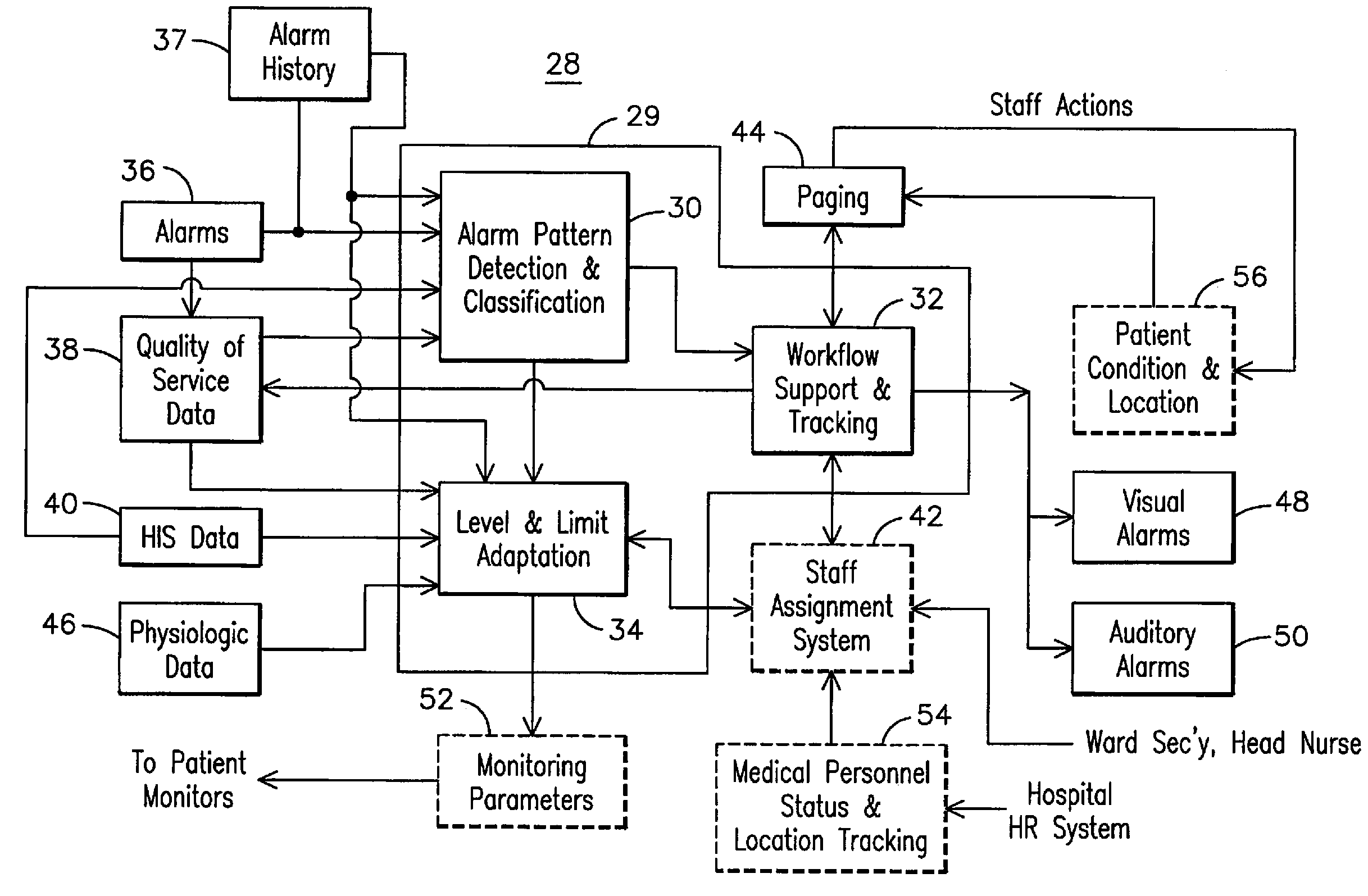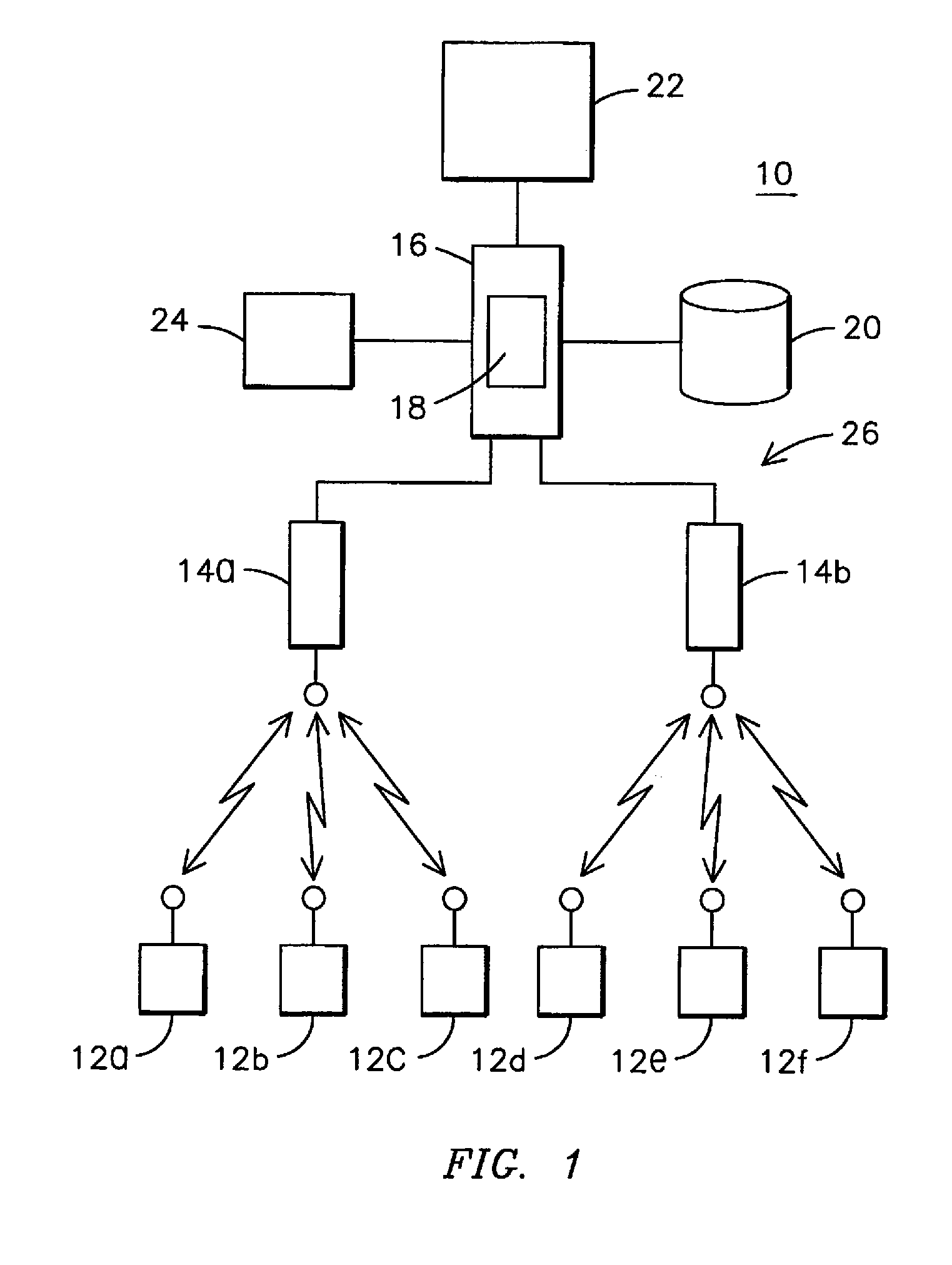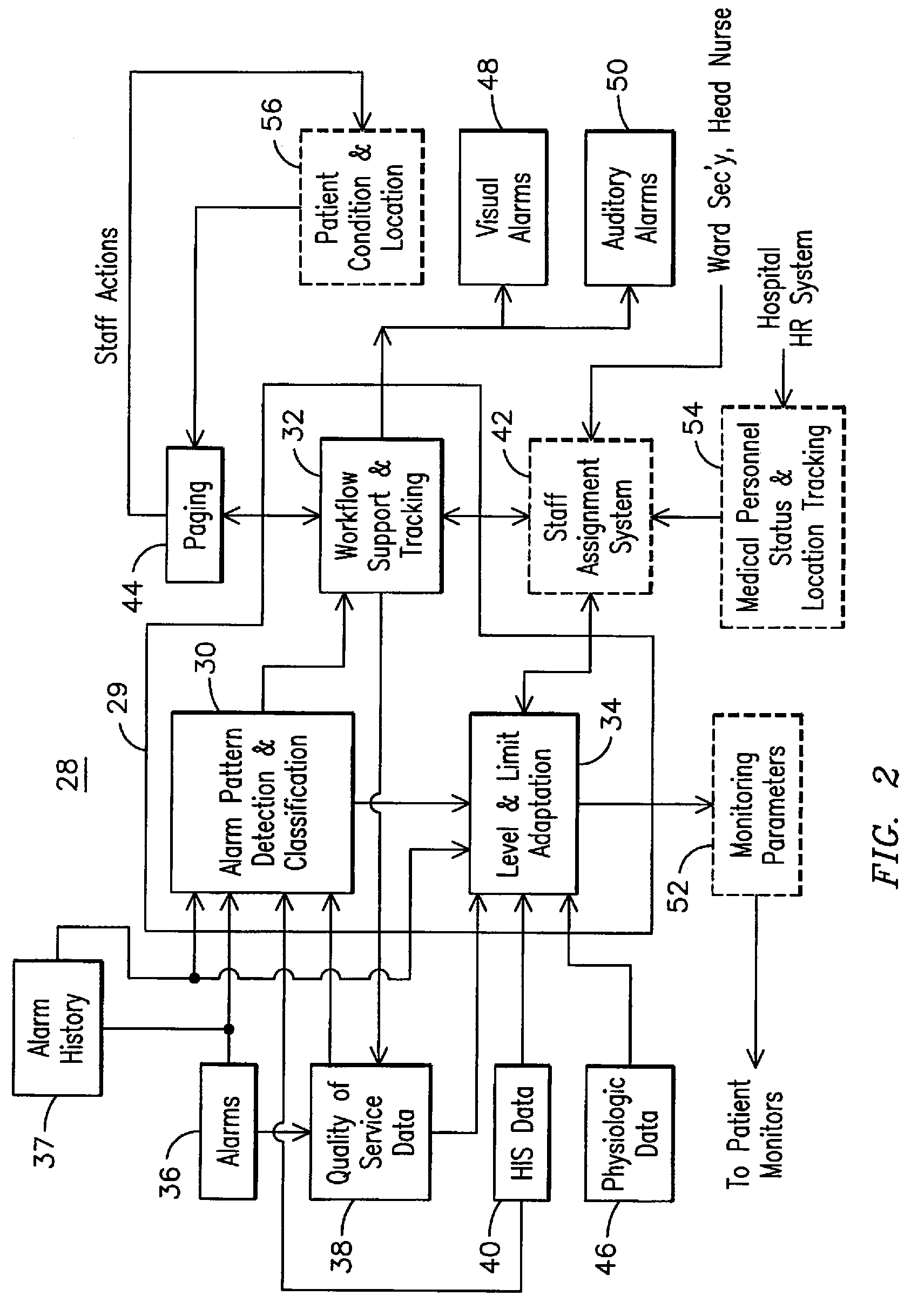System and Method For Providing Centralized Physiological Monitoring
a physiological monitoring and central location technology, applied in the field of central physiological monitoring of patients, can solve the problems of tele-techs monitoring vital signs at a centralized location experiencing work overload, difficulty in continuous monitoring of multiple patients, etc., and achieve the effect of reducing the workload of the user monitoring
- Summary
- Abstract
- Description
- Claims
- Application Information
AI Technical Summary
Benefits of technology
Problems solved by technology
Method used
Image
Examples
Embodiment Construction
[0013]The inventors have recognized that conventional centralized patient monitoring systems may be prone to causing work overload conditions for tele-techs of the systems, such as tele-techs. For example, alarms generated by conventional monitoring equipment may not be immediately actionable by tele-techs monitoring the system, and may require the tele-tech to refer back to raw waveform data to verify the accuracy and consistency of the alarm. In addition, tele-techs may be required to manually note the status of actions in progress, which may take longer to complete than the persistence of the alarm itself. Another problem facing tele-techs is that staff assignments in hospitals tend to be highly dynamic, making it sometimes difficult for a tele-tech to locate an appropriate clinician to respond to an alarm. Furthermore, in wireless monitoring systems that include ambulatory patients, a higher number of artifacts, or false alarms, may be generated than for monitoring systems monit...
PUM
 Login to View More
Login to View More Abstract
Description
Claims
Application Information
 Login to View More
Login to View More - R&D
- Intellectual Property
- Life Sciences
- Materials
- Tech Scout
- Unparalleled Data Quality
- Higher Quality Content
- 60% Fewer Hallucinations
Browse by: Latest US Patents, China's latest patents, Technical Efficacy Thesaurus, Application Domain, Technology Topic, Popular Technical Reports.
© 2025 PatSnap. All rights reserved.Legal|Privacy policy|Modern Slavery Act Transparency Statement|Sitemap|About US| Contact US: help@patsnap.com



